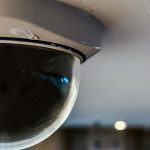More megapixels and fewer cameras? Maybe not a good idea.
Surveillance cameras are a great solution to minimize theft and gain a better overview over a building, parking lot or even an entire campus. With the rise of new technologies it is possible to pack cameras with huge amounts of megapixels to get a clearer image. There are however a few drawbacks to using cameras with extreme resolutions. Video surveillance is a tailored solution and should never be bought out of the box, as such it is really up to the designer of the system what cameras should be located where. However the more the end-user is educated about the surveillance solutions, the more you can influence the design of the system, so you get what you want and now what the designer thinks you want. So let’s dive into it:
What are megapixels
First off, what are megapixels. An image on modern TV’s is made out of small points called pixels. These pixels are able to light up in a multitude of colours, in the range of millions. Multiple of these points taken together will create an image. In the old days something called TVL or TV Lines was used. Instead of pixels there were lines that made up the image. The switch to pixels really happened with the rise of HD resolutions, such as 720p or 1080p. A megapixels is a unit of measurement being one million pixels. These pixels are distributed across the screen in a uniform fashion. For a resolution of 1080p or 2 Megapixels, the pixels are spread across a grid measuring 1920 pixels by 1080 pixels, resulting in the 16:9 aspect ratio of every TV today.
So why is a higher resolution with fewer cameras scenario not so great?
A higher resolution allows for a variety of advantages. With a higher resolution the ability to zoom into the image after it has been recorded is much greater. This is due to the greater detail captured by the camera. Higher resolutions also allow for easier facial identification and to make out all the detail on an intruder. You may now wonder why it might not be a good idea to monitor an area with one 32 megapixel camera, instead of 4 eight megapixel cameras. We have compiled a few points below that you should keep in mind when considering your options.
Redundancy
This is the most obvious disadvantage of trading in video surveillance cameras for less cameras. Some installers will recommend for wide open areas to have one camera. This might be a location where you used to have 4-5 cameras during the analog days. Admittedly it might sound like a good idea to install a single camera and go from there, but what if the new camera fails? You might have an area measuring multiple hundreds of feet covered by that single camera. In the event of a hardware failure you are out an entire sector of your video surveillance coverage. This should never happen in a secure environment as it is a major security and public safety risk. Having multiple cameras may seem like a waste, until a situation like this occurs.
Network Load
Even computers and networks have limits. Imagine a network as if it was a highway. Instead of cars it has electrical impulses traveling along a copper or fiber optic wire. The more data you push through the same wire, the higher the likelihood of a traffic jam, depending on the network design of course. Having a multitude of cameras should always require a separate network to begin with, as the more cameras you have, the more data you are pushing through the wires, eventually slowing down the entire network if you are trying to push large loads of data through your office as well. As this article mainly focuses on performance issues, we will not touch on the network security requirements for cameras, but these can be found here.
Having a 32 megapixel camera will push huge loads of data through the wire, sometimes so much that a normal network cannot keep up with the requirements. Depending on the application, a fiber optic line may have to be connected right to the camera, which however brings us to the next issue. The server recording all the data will have to siphon through all the data and save it. The hardware speeds are all limited on these servers, and having data masses, like the ones that 30+ megapixel surveillance cameras push through can cause the hardware to start lagging if not properly designed. In these cases your frame rate may be limited to four to eight frames per second instead of full 25 frames per second, which gives you a choppier image.
Blind Spots & Angles
Having 4 cameras mounted in a circle will give you a person from each side, in front and in behind. Having a single camera mounted will only give you the side on which the camera is mounted. The example just goes to show that more can be seen with four cameras, even if all of them have a lower resolution. With a single high resolution camera, you may be able to digitally zoom into an image, but you will not be able to see behind an object that is in the picture. With multiple cameras, this becomes a whole lot easier. We recommend planning your system on a site specific basis. Having multiple cameras covering the same area might be a good idea, depending on the area. Since 30+ megapixel cameras should only be used in larger areas, the clear disadvantage comes in when someone hides behind and object and commits a crime. There may be no evidence that it ever happened on video, even though you just purchased a camera worth thousands of dollars.
Night Vision & Darkfighter
Night vision is usually accomplished with infrared LED’s that are mounted on the camera and will light up the scene. The human eye cannot see infrared, as it is in a spectrum that is invisible to the human eye. Cameras however can activate a shutter and see infrared lighting, giving you a great image, that is however black and white. The more megapixels a camera has, the harder it becomes for the camera to get a good picture at night. If you have seen surveillance images at night and it looks as though it is snowing, this can be attributed to either a cheap camera or a high resolution with infrared night vision. The same goes for Darkfighter and Lightfinder solutions. These solutions are only available in cameras that are two megapixels or three megapixels and not any higher. That’s because the higher the resolution, the harder it gets for the camera to capture a good image at night.
Conclusion
Although extremely high resolution cameras exist, it might not always be the best solution to jump right to those cameras. There is a place for the standard 2 megapixel and 3 megapixel cameras out there. These high megapixel cameras are built mainly for bragging rights and bring along a multitude of discussion points. If you are considering a surveillance solution, we recommend working with surveillance solution designer and perhaps get a few more opinions. Just because one person says you should only have four cameras, but at a price that you can have eight cameras, doesn’t necessarily mean that that is your best option.
Consider all your options when purchasing surveillance equipment. Video surveillance is a tricky field to get the right cameras and the right severs and even the right networking technologies without having the proper expertise for it. We are ready to help you with your projects and would be more than happy to give you a second opinion if you have already talked to an integrator for your building.
Get in Touch
We can help you get the right setup for your video surveillance. With partnerships with Hikvision and Axis, we can provide you with a large product offering to make sure you get the right cameras for your application. Feel free to contact us with any questions or comments. You can call us at any time at (403) 477-4800 or email us at [email protected].





